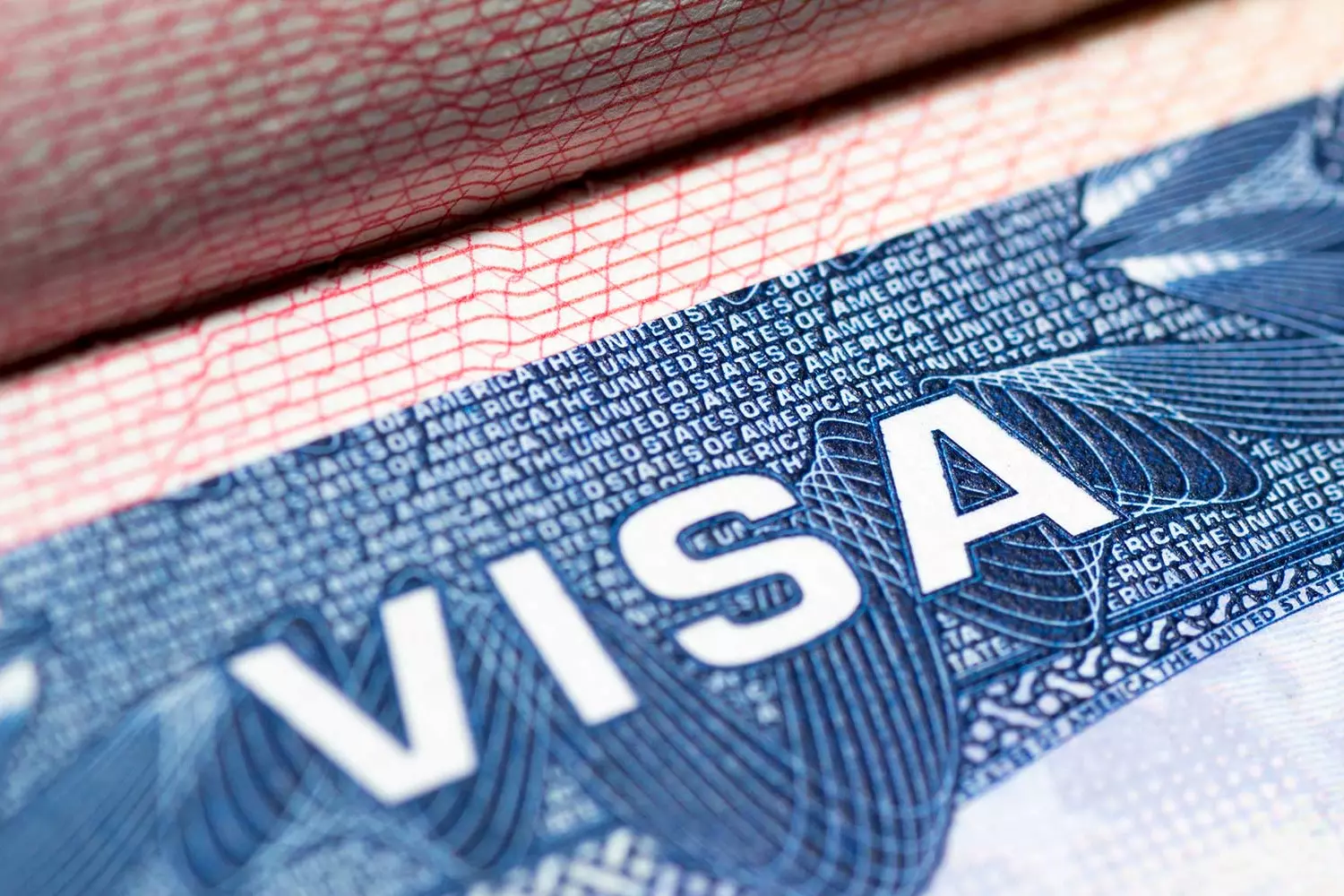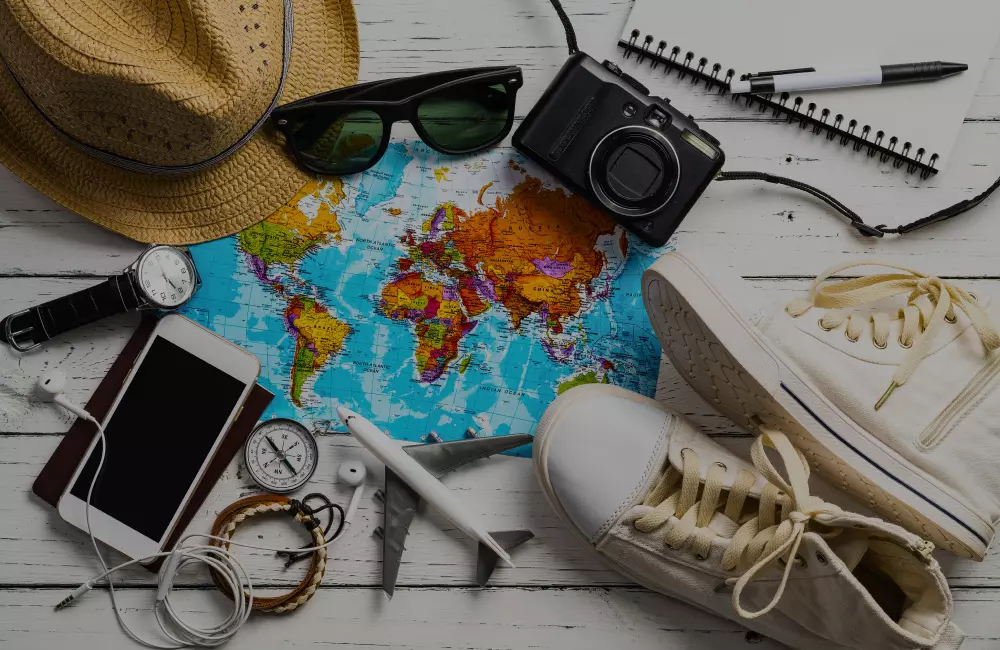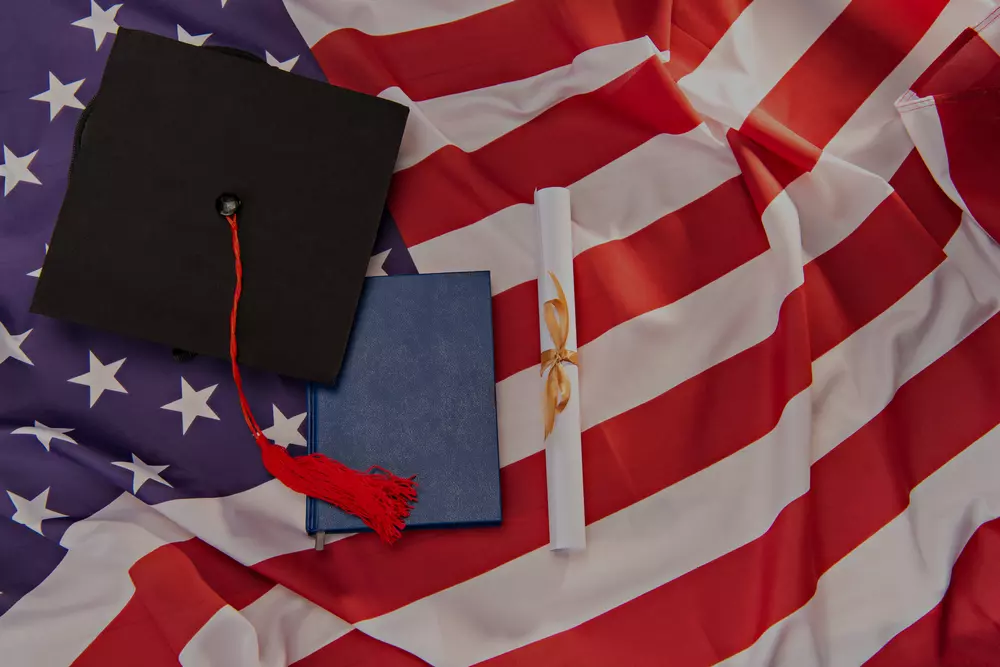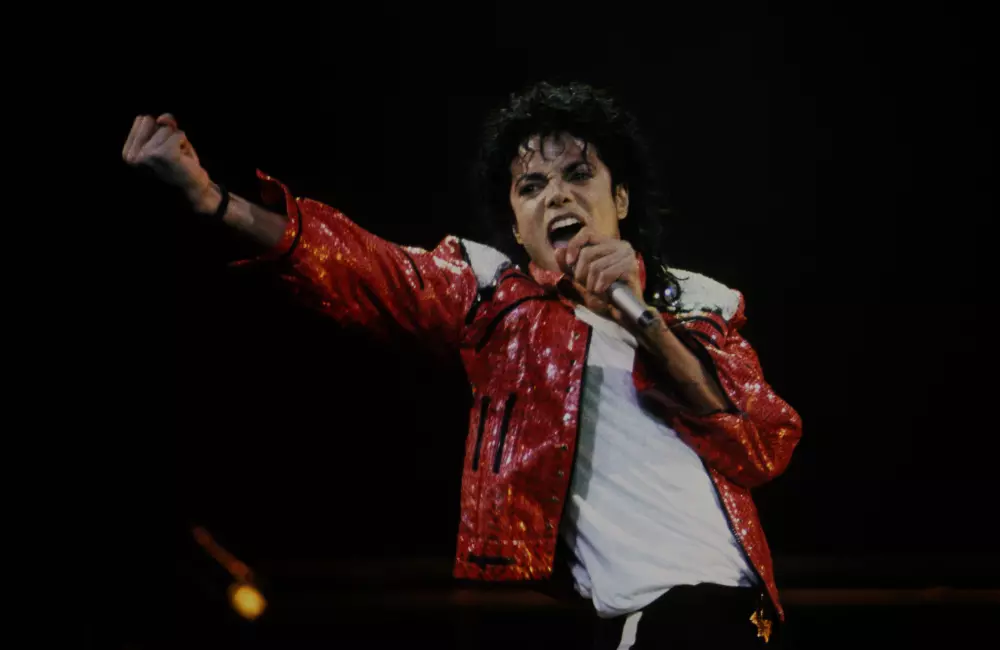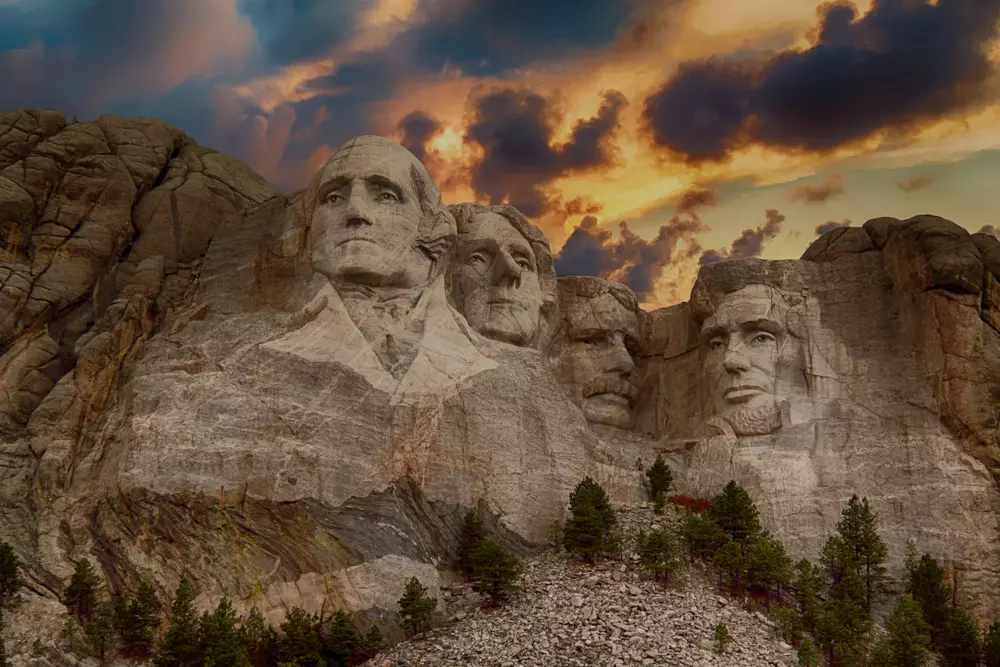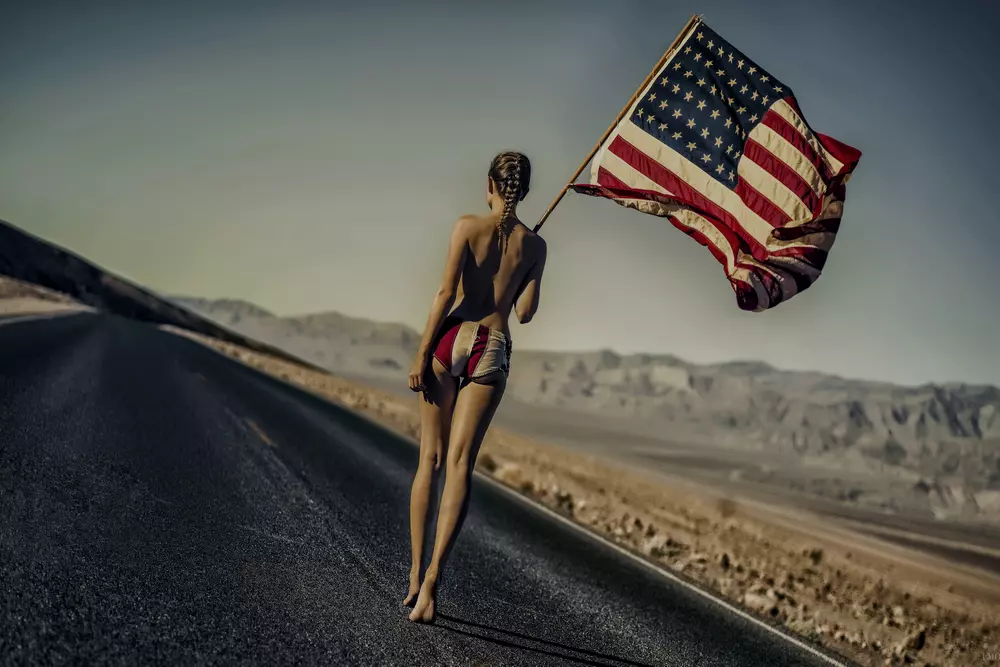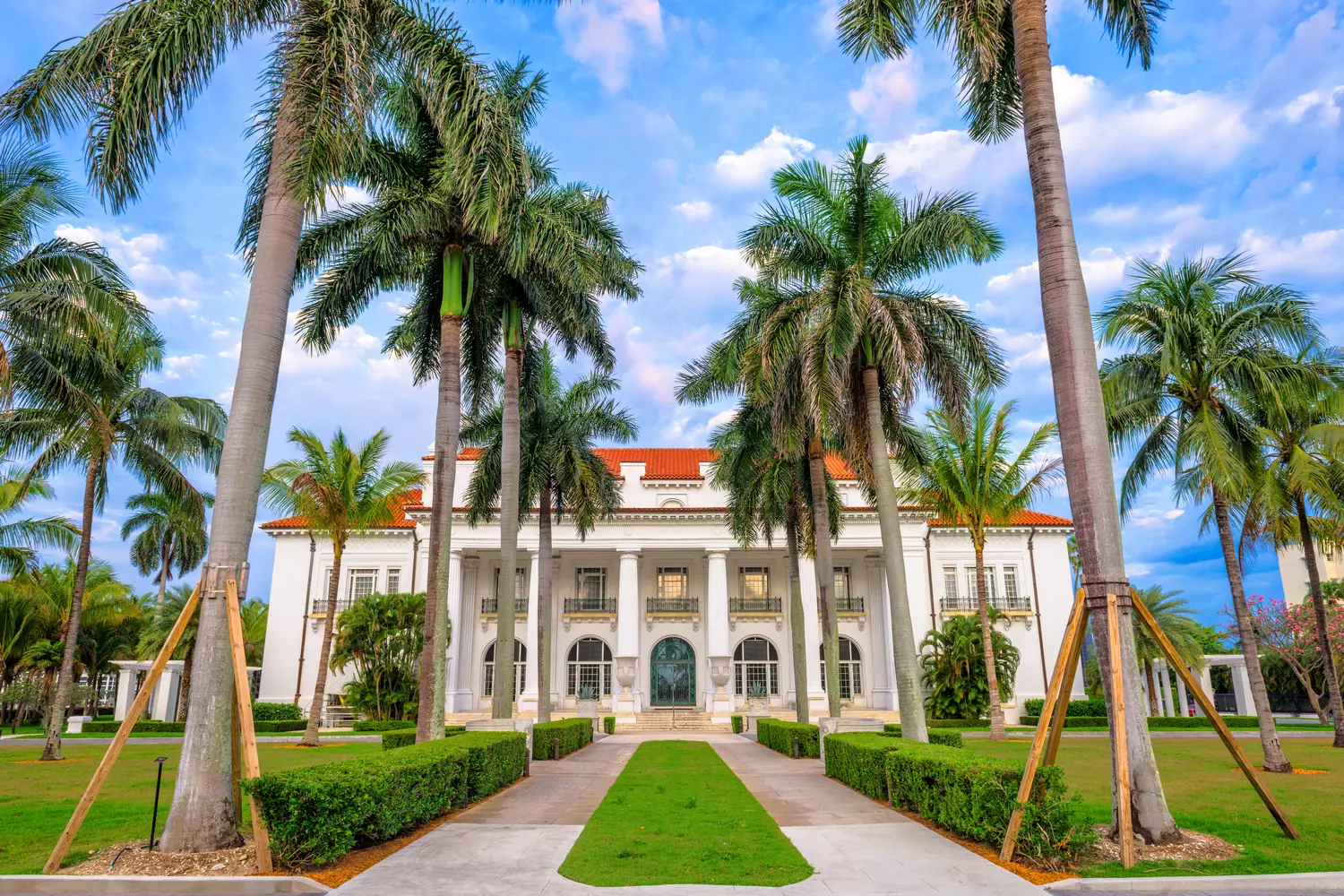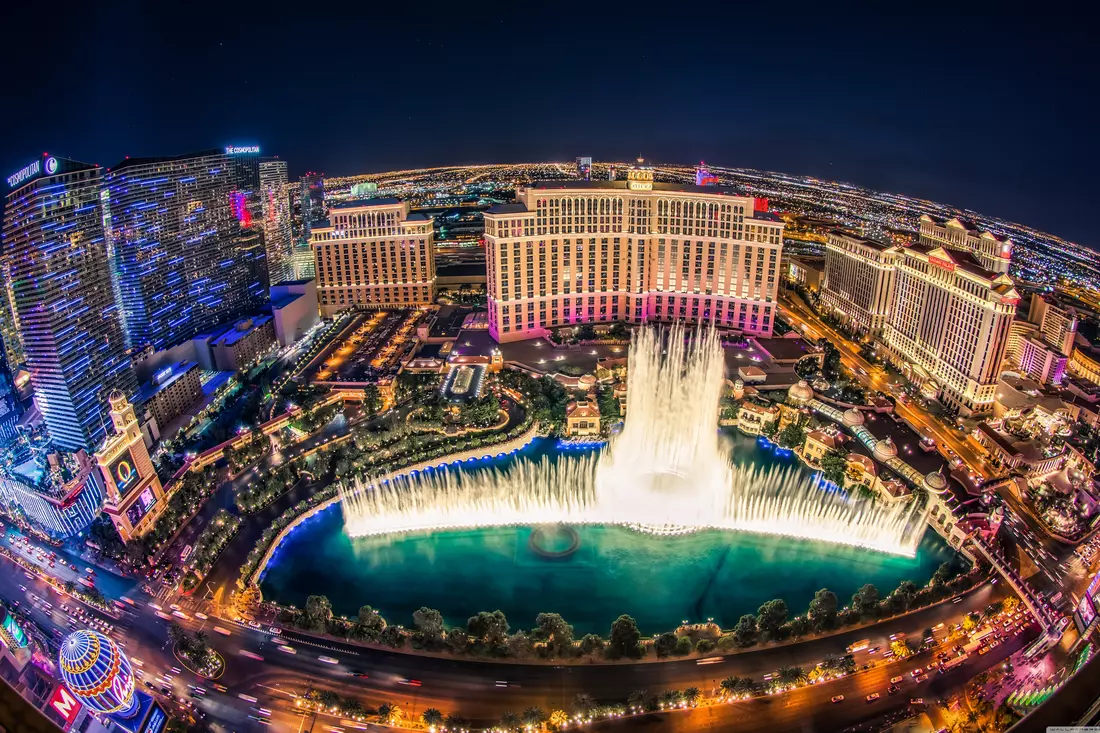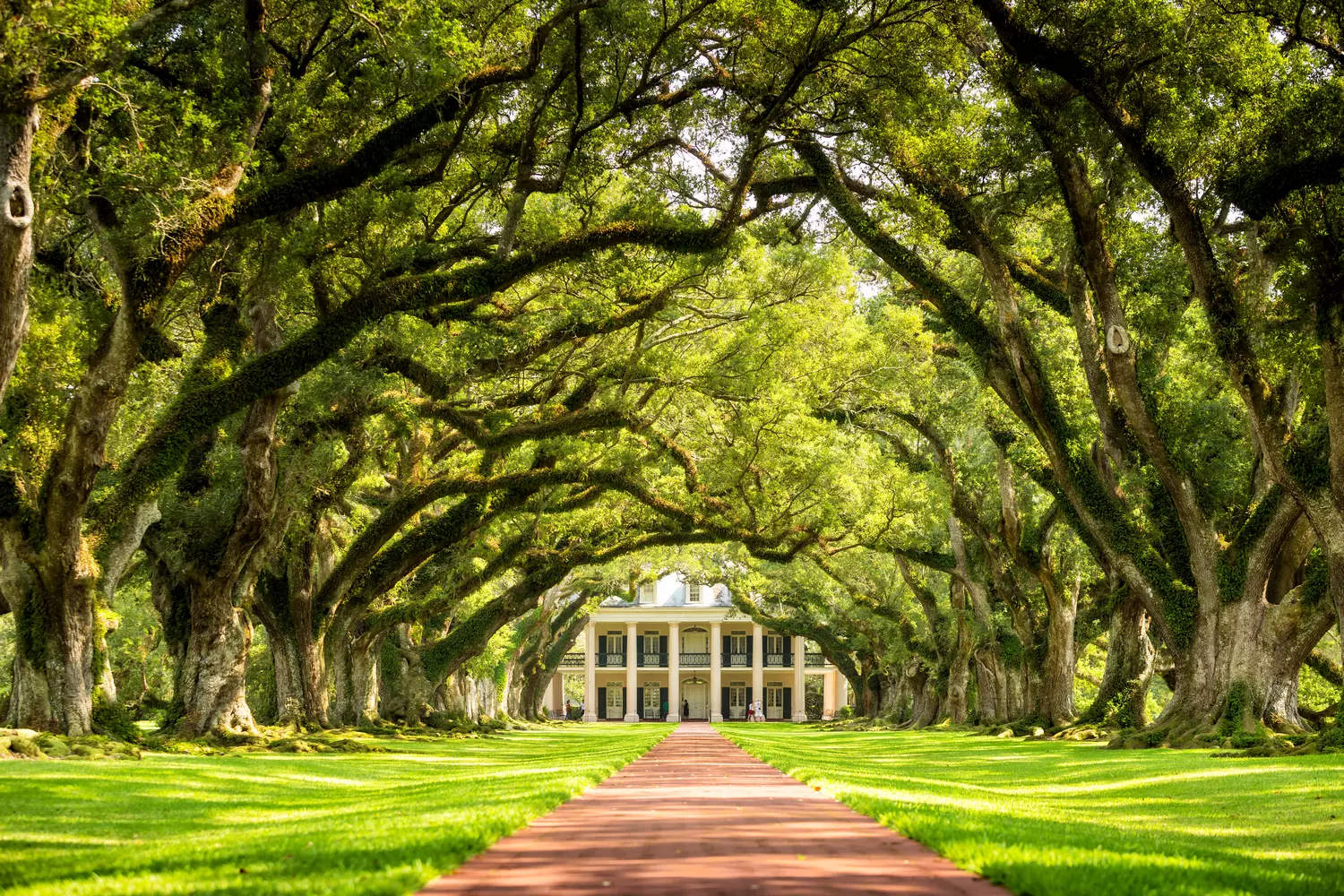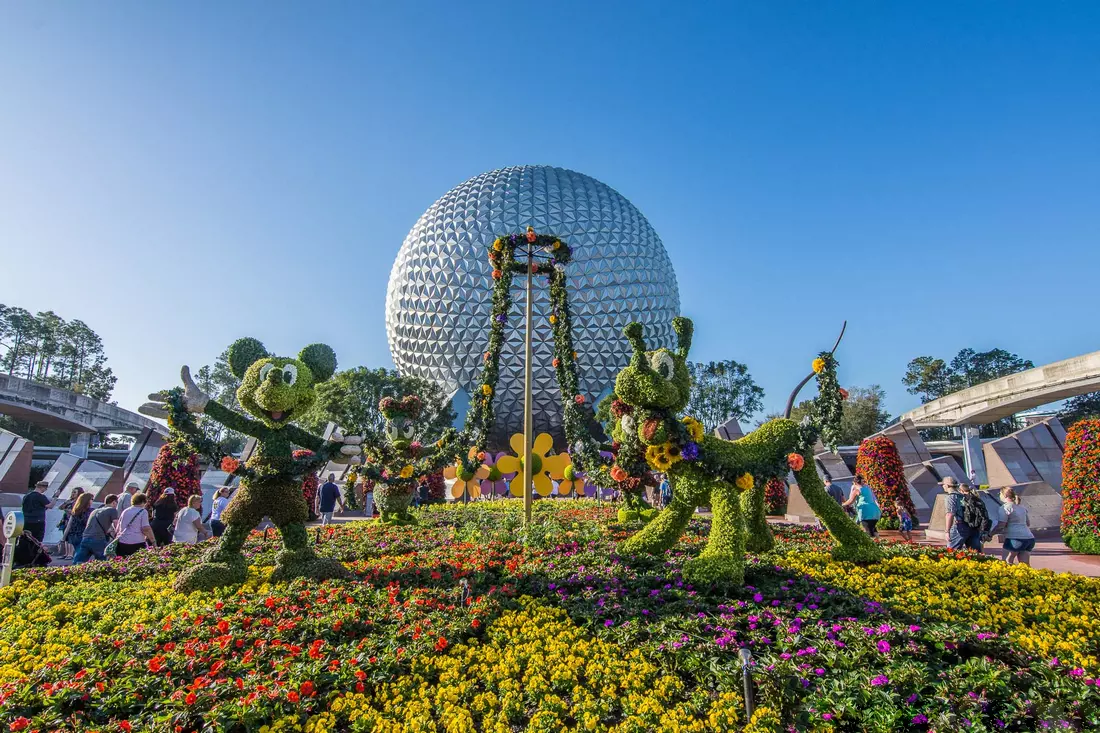America isn’t just the land of opportunity — it’s the land where shopping has become a true national art form. Here, going to a store isn’t just about buying clothes — it’s an experience, a ritual, an emotion. Fashion in the U.S. is an integral part of the cultural DNA, and the great department stores are its temples.
Every year, millions of tourists head to New York, Los Angeles, and Miami not just for the skyscrapers, ocean, and museums, but for a unique shopping experience that can’t be replicated anywhere else. Only in America can you try on a Burberry coat while a live jazz band plays around the corner, sip coffee in a Chanel boutique, and then head to a personal fitting in the lounge at Saks Fifth Avenue.
Multibrand department stores in the U.S. are more than retail spaces. They are icons of taste, style, and history. They’ve survived wars, economic crashes, and the digital revolution — and still remain relevant. More than that, they’ve become symbols of stability and status. And if you want to understand America — start with its stores.
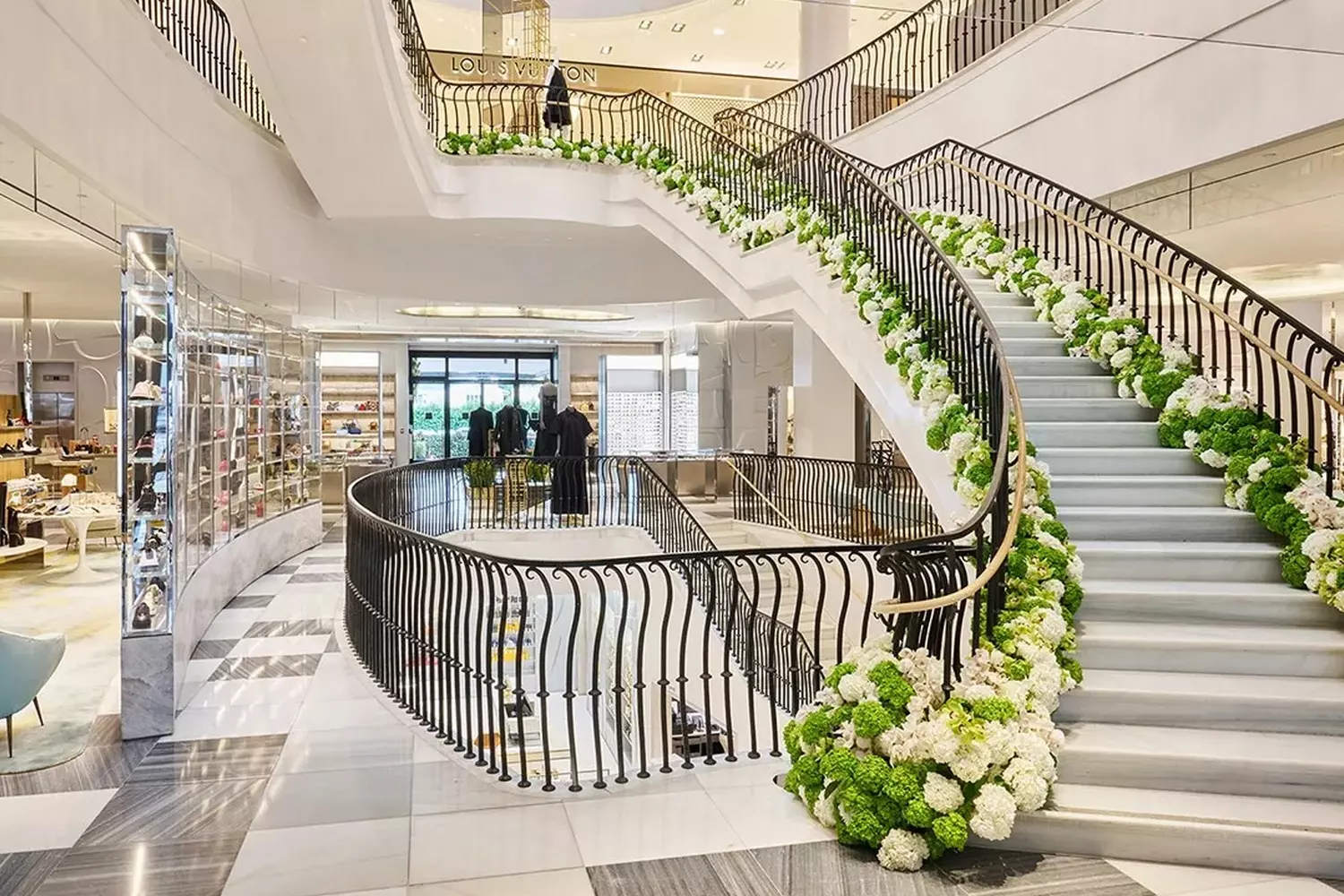
In select stores like the flagship Saks Fifth Avenue in New York, exclusive previews of new collections take place even before they hit the sales floor. This is shopping at the level of high society chronicles.
Stores as Universes: The World of Multi-Brand Department Stores
Multibrand department stores aren’t just retail spaces bringing different brands under one roof. They are entire universes, where every section, every display window feels like a chapter in a book about fashion, style, and individuality. It’s easy to lose track of time here — wandering from urban streetwear corners to elegant evening gowns by world-famous fashion houses.
In these stores, accessible brands like Levi’s and Calvin Klein coexist harmoniously with luxury icons like Dior, Gucci, and Bottega Veneta. That’s what makes department stores a paradise for those who love freedom of choice and value convenience.
But most importantly — these places aren’t just about shopping. They’re about *inspiration*. You can consult a stylist, try on curated looks in comfortable, well-lit fitting lounges, take a latte break with a view of the displays, or even attend fashion events or runway shows. In the U.S., major department stores have long become cultural institutions — shaping taste, setting trends, and sparking emotions.
The History of American Department Stores: From Humble Origins to Cultural Icons
Department stores are more than shopping destinations — they’re deeply rooted in American culture. Their emergence in the U.S. is tied to sweeping changes like industrialization, urbanization, and the evolution of consumer behavior. Here’s how they became a fundamental part of everyday American life:
- The Early Days
In the 19th century, America had yet to see modern department stores. Instead, people relied on specialized shops — grocers, tailors, shoemakers. But the seeds of change were being planted with the first multi-item stores. - The Demand for Larger Stores
As cities grew and populations soared, there was an increasing need for larger stores that could meet diverse needs under one roof. Industrialization and the push for urban convenience made this all the more vital. - Macy’s
In 1858, Rowland H. Macy opened his store in New York — one of the first to sell everything from clothes to groceries. He introduced fixed pricing (no haggling!) and pioneered customer-friendly policies like returns. Macy’s became a retail revolution in itself. - The Rise of the Concept
This marked the birth of department stores as we know them. Soon, they were offering not just apparel and food but cosmetics, appliances, toys, and more — true one-stop shopping destinations. - New Contenders
Competitors like Wanamaker’s in Philadelphia emerged (founded in 1876), bringing even more innovation — including the first use of radio advertising and extravagant seasonal sales. - Cultural Significance
By the early 20th century, department stores evolved into architectural and social landmarks. Grand facades, elegant interiors — these stores weren’t just places to shop, but places to be seen. - Comfort Meets Service
As time went on, services became more refined: personal shopping assistants, luxurious fitting rooms, cozy cafés — all designed to make shopping a pleasure rather than a chore. - The Roaring Twenties
Economic prosperity in the 1920s fueled department store expansion. With rising middle-class incomes, shopping became more than necessity — it was leisure, lifestyle, and aspiration. - Fashion Revolutions
The mid-20th century brought a boom in fashion. Department stores began housing American power brands like Ralph Lauren, Calvin Klein, and Tommy Hilfiger — now staples of everyday style. - Post-War Boom
After World War II, department stores played a major role in economic recovery. They expanded nationwide, created jobs, and made quality goods widely accessible. - Service Evolution
Technological advances brought loyalty programs, return policies, and later — in-store kiosks and cashless payments. Advertising through radio and TV became standard. - Facing New Competition
By the late 20th century, big-box retailers and online platforms began to challenge department stores. In response, many upgraded their strategies, modernized their aesthetics, and went digital. - The Digital Age
Today, stores like Nordstrom, Macy’s, and Saks Fifth Avenue have successfully blended physical and digital — with mobile apps, e-commerce platforms, and seamless omnichannel experiences. - Personalized Shopping
Modern shoppers expect more than products. They want curated experiences — stylists, events, exclusive offers — and department stores are evolving to deliver just that.
The history of clothing department stores in the U.S. is a story of innovation, resilience, and cultural transformation. What began as places to find variety became institutions that define taste, quality, and modern lifestyle. And even in the face of 21st-century challenges, America’s department stores remain vibrant symbols of fashion and comfort.
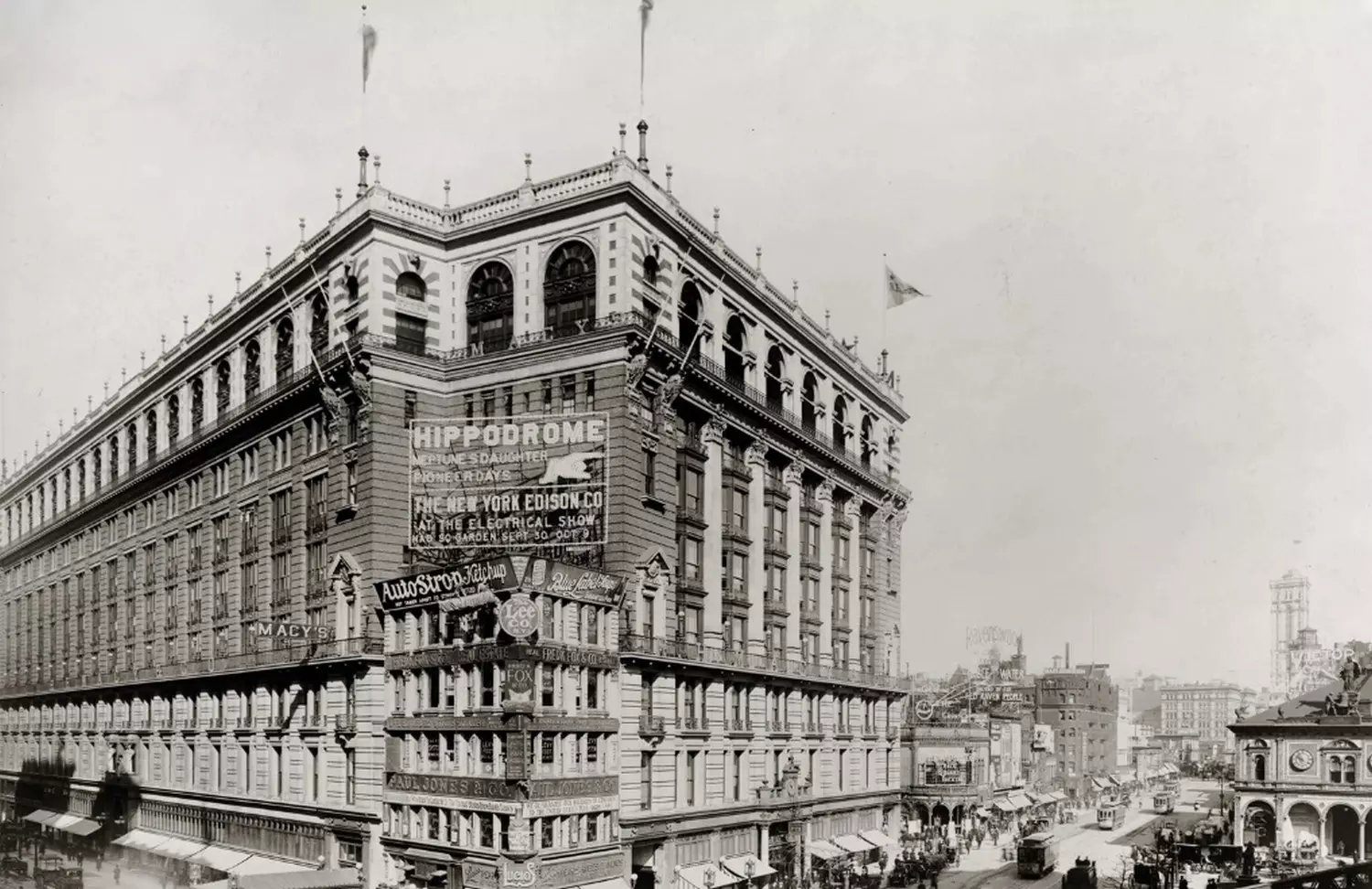
Nordstrom: Scandinavian Minimalism Meets American Grandeur
Nordstrom is a symbol of thoughtful, refined shopping. Born in Seattle as a shoe store in 1901, it has since grown into a $15 billion retail giant known for its customer-first philosophy. Today, there are over 350 locations across the U.S., operating in various formats — from Nordstrom Rack (outlets offering up to 70% off) to Nordstrom Local (compact service hubs with no inventory, but offering online pickups, personal styling, and fitting sessions).
What Makes Nordstrom Unique
- Premium-yet-accessible selection — from Ted Baker and Theory to Gucci and Prada.
- Flawless service: personal stylists, fast shipping.
- No-questions-asked return policy — you can return items even a year later.
- Nordstrom Anniversary Sale — one of the most anticipated events of the year, where *new collections* are offered at discounted prices (not clearance items!).
- Seamless online shopping — including same-day delivery and pickup from Nordstrom Local hubs.
- Spacious, beautifully curated stores with a vibe of “fashion without the fuss.”
- Legendary shoe department — offering over 300 brands and 100,000 pairs.
- The Nordstrom founders never went to business school — they simply believed that “the customer is always right.” That philosophy turned them into billionaires.
Nordstrom Rack isn’t just a discount store — it’s a full-fledged shopping destination where you can score luxury leftovers, shoes, accessories, beauty products, and activewear at amazing prices. Its popularity is so strong that Rack has its own loyalty program and exclusive sales events.
Fun Fact: At Nordstrom, you can schedule a fitting in multiple sizes and have your items brought directly to your car — curbside. Some Nordstrom Local locations even offer same-day tailoring, perfect for last-minute event prep.
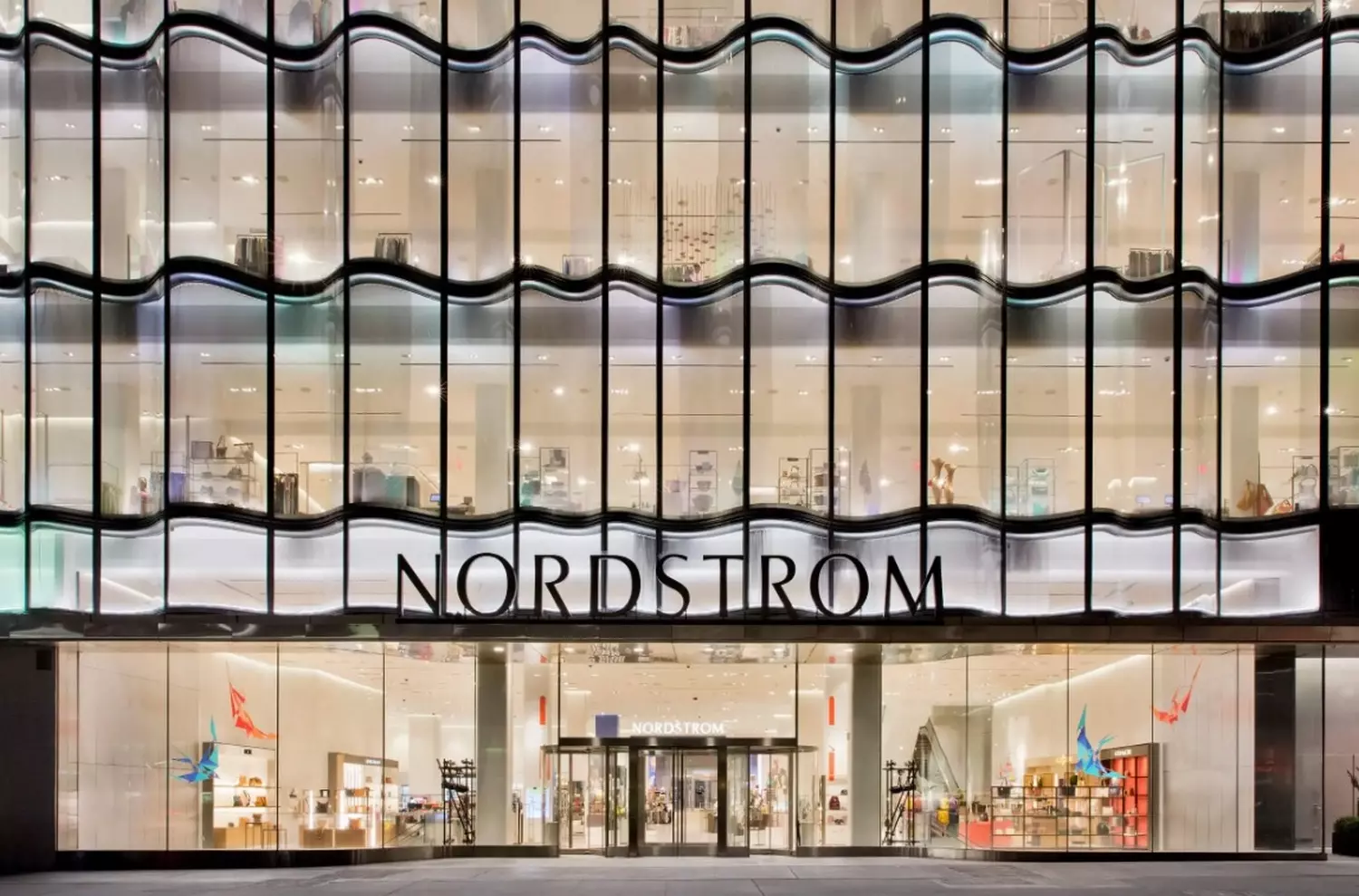
Bloomingdale's: New York Fashion with Heritage
Bloomingdale’s is a true icon of New York City and its vibrant fashion spirit. Founded back in 1861, it has become one of the most recognizable department stores in the world. Its signature Little Brown Bag is known across the globe. Walking into Bloomingdale’s means stepping into not just a fashion hub — but the very soul of New York: bold, confident, and effortlessly stylish.
What makes Bloomingdale’s stand out is its curation — offering everything from staple collections by designers like Calvin Klein and Ralph Lauren to limited-edition capsules you won’t find anywhere else. From fashion to beauty to accessories, everything here hits the sweet spot between luxury and trend-forward relevance.
Fun Fact: Bloomingdale’s was the first department store in America to introduce a dedicated men’s fashion section — paving the way for menswear in mainstream retail.
What to expect at Bloomingdale’s:
- Collections from top designers like Burberry, Michael Kors, and Balmain.
- Exclusive collaborations — like Adidas x Gucci sneakers that sell out in minutes.
- One of the best beauty departments in the U.S. — with over 200 niche fragrance brands.
- A one-year return policy, giving you peace of mind with every purchase.
- Signature sales — like Friends & Family, offering 25% off storewide.
- Bloomingdale’s holiday windows on Christmas are a tourist attraction in their own right — drawing over 1 million visitors annually.
The store's atmosphere captures the New York essence — a perfect blend of edgy and elegant, reflecting the city’s ever-evolving fashion DNA.
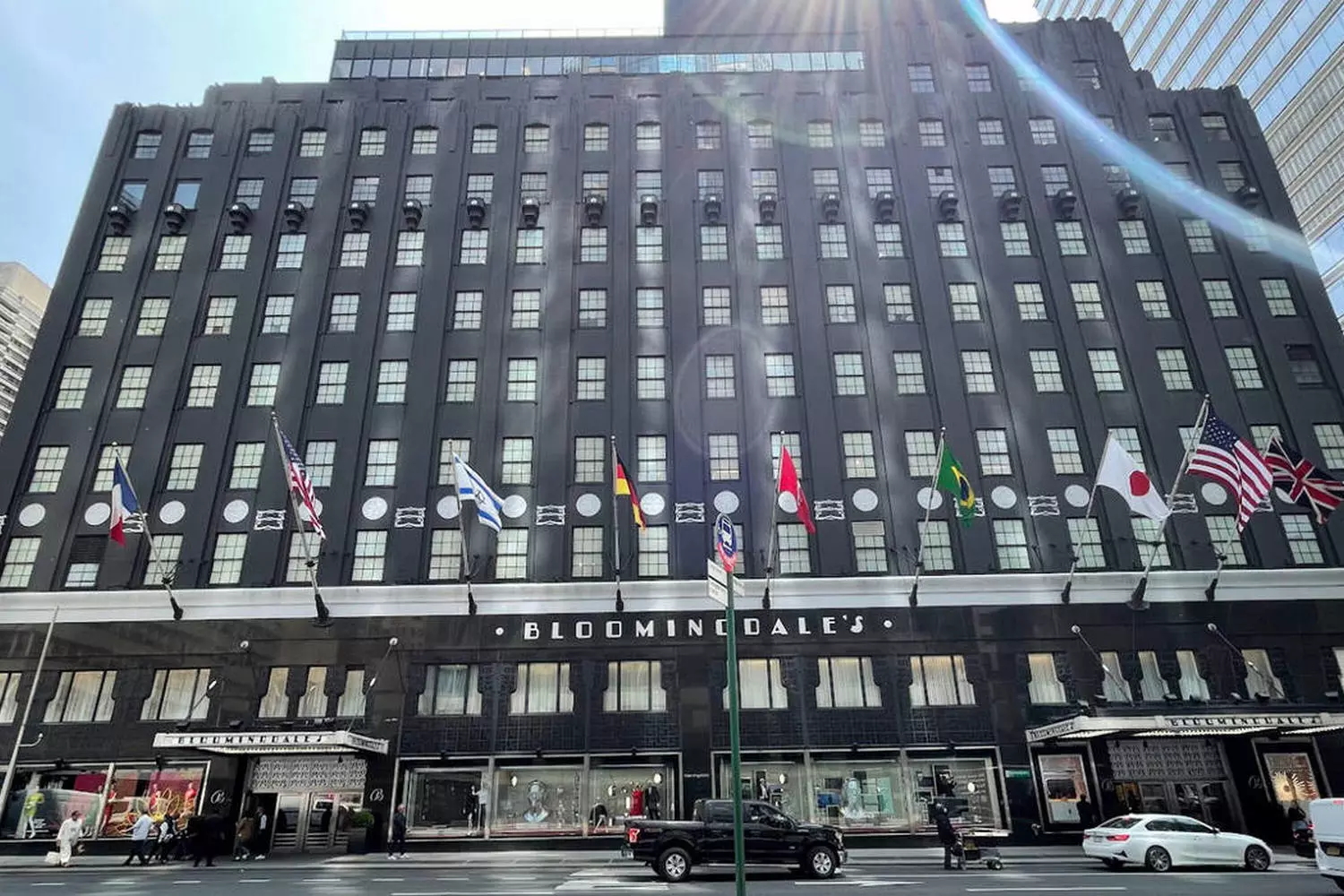
Saks Fifth Avenue: Luxury That Takes Your Breath Away
Saks Fifth Avenue is a true paradise for luxury fashion lovers. Home to top-tier designers like Chanel, Dior, Valentino, Balenciaga, Fendi, Loewe, Saks offers the latest collections that are often exclusive to the high-end segment. Since its opening in 1924, Saks has become a go-to destination for U.S. First Ladies and Hollywood stars alike.
What Makes Saks Unique
- Personal Shopping
Enjoy a tailor-made experience with dedicated stylists in private lounge areas — turning shopping into a true luxury affair. - Private Fashion Previews
Elite clients get invited to exclusive showcases of upcoming collections before they hit the sales floor. - An unmatched selection of shoes and handbags
- Saks is renowned for its expansive range of accessories — from classic Louis Vuitton bags to rare, store-only finds.
- At-Home Try-On
In select cities, you can have items delivered to try on in the comfort of your home — making luxury more accessible than ever.
The flagship Saks Fifth Avenue store on Fifth Avenue in New York isn’t just a store — it’s a fashion landmark. As iconic as any museum, it draws crowds of style enthusiasts and curious tourists year-round.
What & When to Shop at Saks
- Exclusive Dior and Chanel Pieces
Find items not available in Europe. - The largest cashmere collection in the U.S.
Over 1,000 styles every season. - Designer Sale (January & June)
Up to 80% off on luxury designers. - Black Friday Specials
Don’t miss deals on beauty and accessories.
Fun Fact: In the 1950s, Saks Fifth Avenue pioneered the concept of “window shopping” — people would visit just to admire the stunning displays.
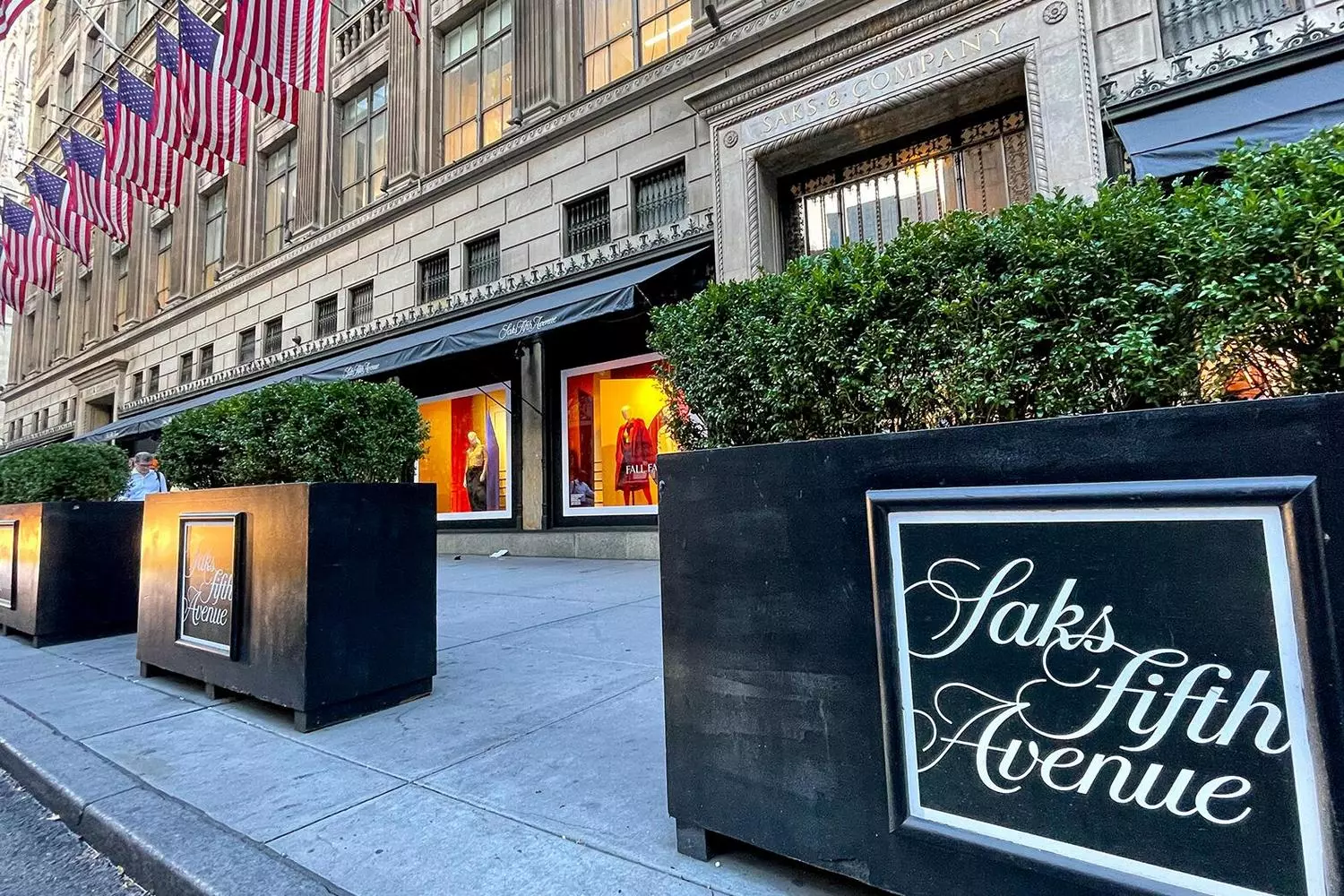
Neiman Marcus: From Texas with Luxury
Neiman Marcus is a true icon of refinement, born in Dallas and quickly recognized as a symbol of luxury shopping. Founded in 1907, it began as a boutique catering to high-society women with an eye for fashion. Today, Neiman Marcus boasts 36 upscale department stores across the U.S., along with a global online presence.
More than just a store, Neiman Marcus offers an immersive shopping experience. Focused on high-end fashion and exclusivity, it stands out for its one-of-a-kind collections and exceptional customer care. Shopping here feels more like entering a world of elevated elegance than simply browsing racks.
What Makes Neiman Marcus Special
- Elite Designer Selection
From Tom Ford to Oscar de la Renta, only the finest global brands make the cut. - Iconic Gift Catalogs
These collectible catalogs are a blend of high fashion and art — truly a Neiman signature. - Client Appreciation
Expect surprise gifts and gestures that make every visit feel personal and memorable. - Luxury Boutique Vibes
The store layout resembles curated salons more than a traditional department store, offering a VIP ambiance. - Exclusive Capsule Collections
Special-edition pieces from Valentino, Tom Ford, and Dolce & Gabbana found only at Neiman Marcus. - Legendary Jewelry Department
Rare pieces from icons like Harry Winston and Cartier. - Eveningwear Haven
Over 500 gowns per season — a dream for gala-goers and fashionistas alike.
Shopping Secrets at Neiman Marcus
- Private Sale Events
Invitation-only sales with up to 50% off on fresh arrivals. - “Stylist for a Day” Service
Personal wardrobe curation from top-tier stylists. - Complimentary Gift Wrapping
Even for items you didn’t buy in-store — luxe meets generosity.
Fun Fact: In the 1960s, Neiman Marcus famously featured a real live camel and an Arabian tent in their holiday catalog — a marketing stunt that made headlines across America.
For those who value not just quality, but the emotional experience of shopping, Neiman Marcus is the ultimate destination. Here, attention to detail and timeless style come together to create something truly unforgettable.
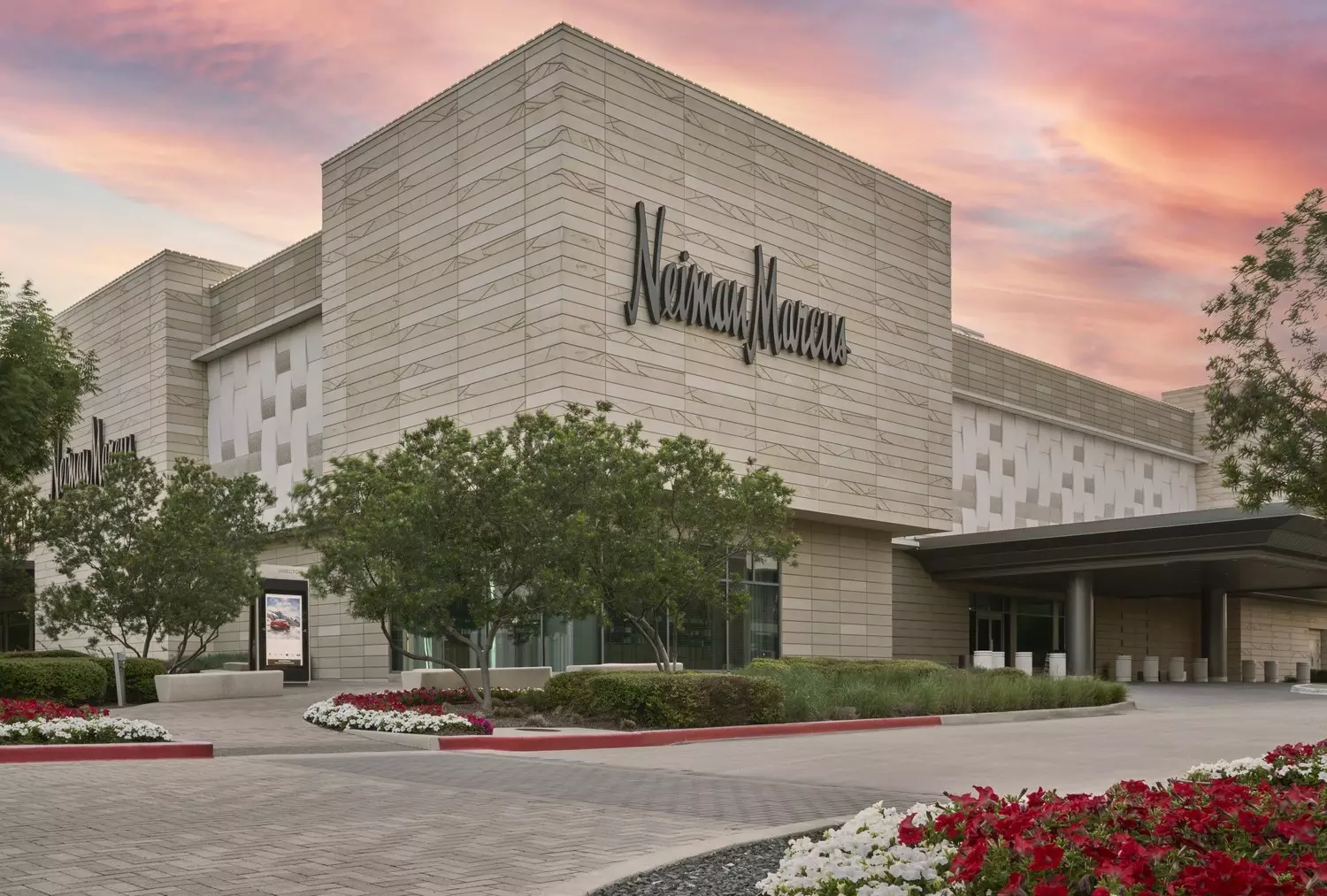
Macy's: The Department Store for Everyone
If Nordstrom is flawless service, and Neiman Marcus is untouchable luxury, then Macy’s is the beloved giant of accessible American fashion. It’s where style meets affordability without losing its charm.
Macy’s is the largest department store chain in the U.S., renowned not only for its vast selection but also for its wallet-friendly prices. While it doesn’t focus solely on luxury, Macy’s is often where Americans take their first steps into the world of branded fashion. Thanks to a smart mix of quality and cost, it appeals to a wide audience — from budget-conscious shoppers to trend-savvy deal hunters.
Why America Loves Macy’s
- Iconic Location
The flagship store on 34th Street in NYC (Herald Square) spans an entire city block and is the largest department store in the world. - Thanksgiving Tradition
The annual Macy’s Thanksgiving Day Parade, with its giant balloons, is watched by over 50 million people. - Affordable Luxury
Grab brands like Michael Kors, Calvin Klein, and Ralph Lauren for less than boutique prices. - Quality Meets Accessibility
A broad pricing range makes Macy’s a go-to for every budget level. - Deals That Stun
From Black Friday to One-Day Sales and monthly coupons offering up to 30% off, savings are always around the corner.
“Macy’s isn’t just a store — it’s part of American culture.” – The New York Times
Smart Shopping Tips at Macy’s
- Macy’s Star Money Days
Earn 10% back to spend on your next purchase. - Macy’s Backstage
An outlet inside the store with discounts up to 80%. - Email Signups
Gain access to exclusive promo codes and early sales.
Macy’s also offers a robust online shopping platform with nationwide shipping — perfect for those who can’t visit in person. Think of it as Target with a sprinkle of glamour and a dash of sparkle.
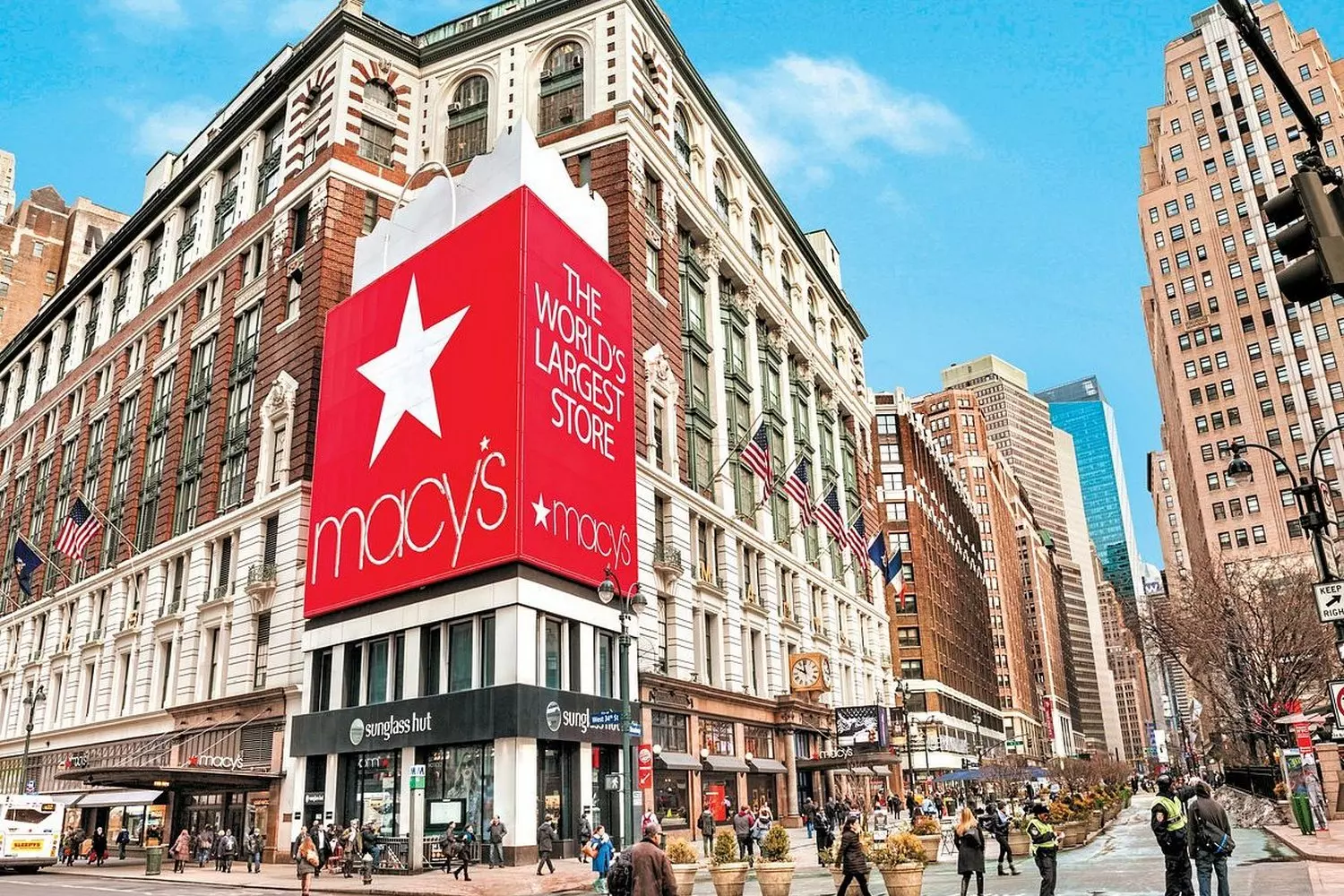
Barneys New York: The Fall and Rebirth of a Legend
Barneys New York was a true fashion icon before closing its doors in 2019 — but its legacy still resonates. The brand has since made a quiet comeback through partnerships with Saks Fifth Avenue and selective online platforms.
Barneys was never just a department store — it was a space for fashion revolutionaries. It championed future legends like Alexander Wang and Rick Owens before they were household names, and it wasn’t afraid to host provocative, unconventional runway shows.
5 Reasons Why Barneys Became a Legend
- The First to Take Risks
In the '70s, Barneys boldly introduced avant-garde Japanese designers like Comme des Garçons and Yohji Yamamoto to a skeptical New York fashion scene. - Editorial Merchandising Concept
Rather than organizing clothes by brand, Barneys displayed them like a magazine spread — teaching shoppers to mix Prada with emerging designers. - Artistic Store Design
Its window displays and interiors often resembled art installations more than retail spaces, attracting both fashion lovers and aesthetes. - Showrooms as Performance Art
One legendary moment: mannequins that screamed with the recorded voices of Kate Moss and Naomi Campbell (1996). - The Signature Black Bag
A status symbol in the '90s — many carried it as a fashion accessory in its own right. - The Closure Saga
Its 2019 bankruptcy was a moment of mourning in the industry. The final clearance sale became a pilgrimage — fans even bought hangers with the Barneys logo.
Though Barneys is no longer what it once was, it lives on — reimagined for the digital age. Its legacy of bold fashion curation and artistic retail continues to inspire, reminding the world that style is about vision, not just labels.
Fun Fact: In 1993, Barneys introduced the first ever “fashion” credit card — a sleek black design that later inspired versions by American Express and Chase.
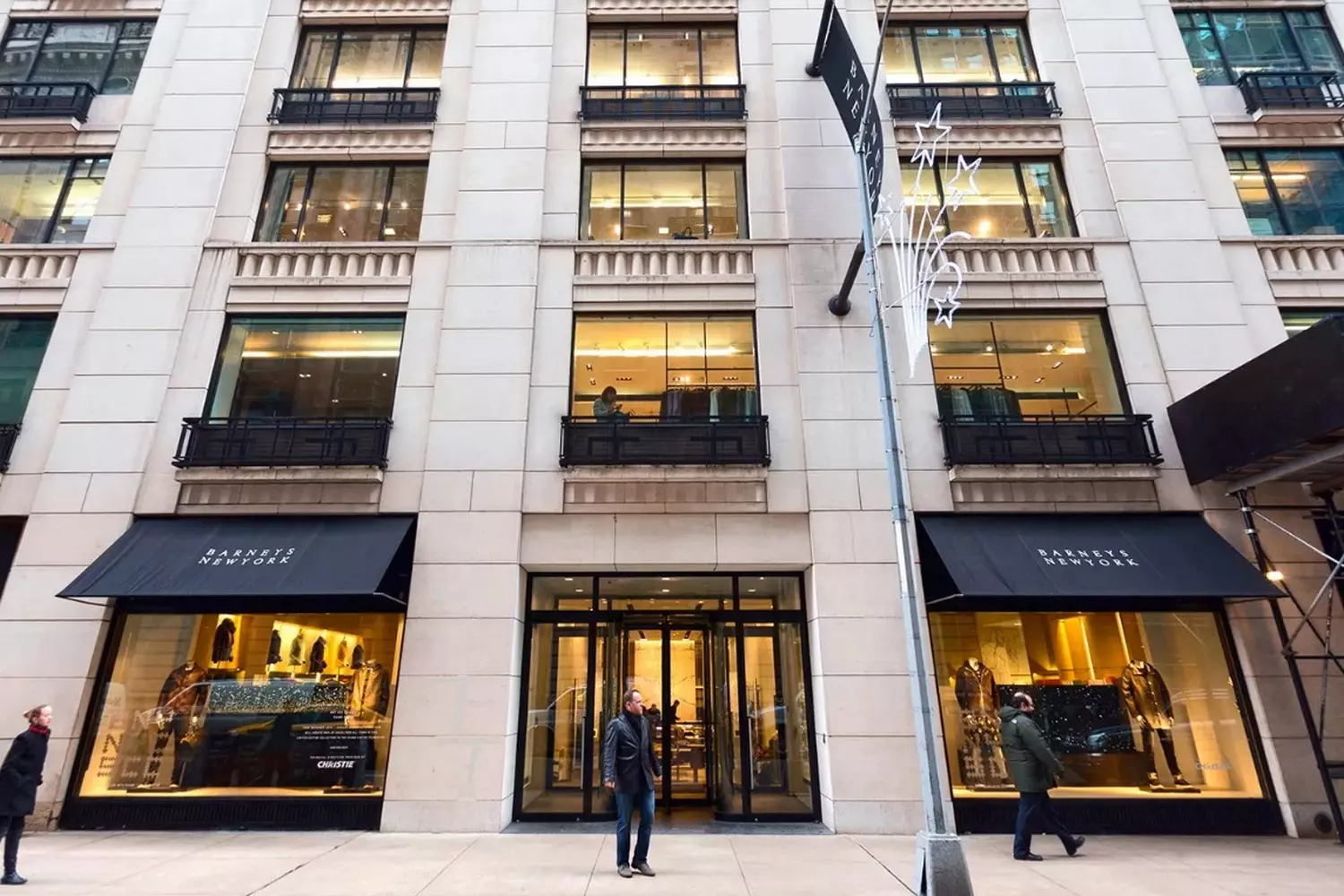
Other Notable Multi-Brand Department Stores in the US
While major department stores like Nordstrom and Macy’s cover the full spectrum of fashion preferences with something for everyone, smaller multi-brand boutiques offer a different kind of magic. These stores often provide a more intimate atmosphere and curated selection, where you can find not only well-known labels but also local and niche brands rarely seen in big retail chains.
Smaller department stores focus on exclusivity, limited collections, and hard-to-find pieces — a major draw for fashion lovers who crave individuality. Here, you might stumble upon rare styles, one-off accessories, or limited-edition sneakers you won't see anywhere else. They also frequently host private sales and offer personalized styling sessions for a bespoke shopping experience.
Many of these stores lean into specific style segments — from streetwear to vintage treasures — and are home to experimental designers at the edge of fashion. They're often the launchpad for breakout talent and cult labels embraced by insiders and tastemakers.
In big cities, these independent stores become cultural hubs for style seekers. Shopping there isn’t just a transaction — it’s a journey through fashion eras, aesthetics, and global inspirations.
- Opening Ceremony in New York
A cult favorite for avant-garde fashion enthusiasts, offering bold collections from emerging designers and offbeat pieces from iconic labels. - The Webster in Miami
Known for its refined curation of high-end fashion and artful displays. Every detail, from decor to garment, feels thoughtfully chosen and exclusive. - Dover Street Market in Los Angeles
A global fashion destination famous for its disruptive layout and dynamic showcases. The store is more like a fashion playground where creativity rules.
These smaller multi-brand department stores play a vital role in shaping trends and introducing new voices in fashion. They offer discovery, curation, and a sense of personal connection — all of which are increasingly rare in today’s mass-market retail world.
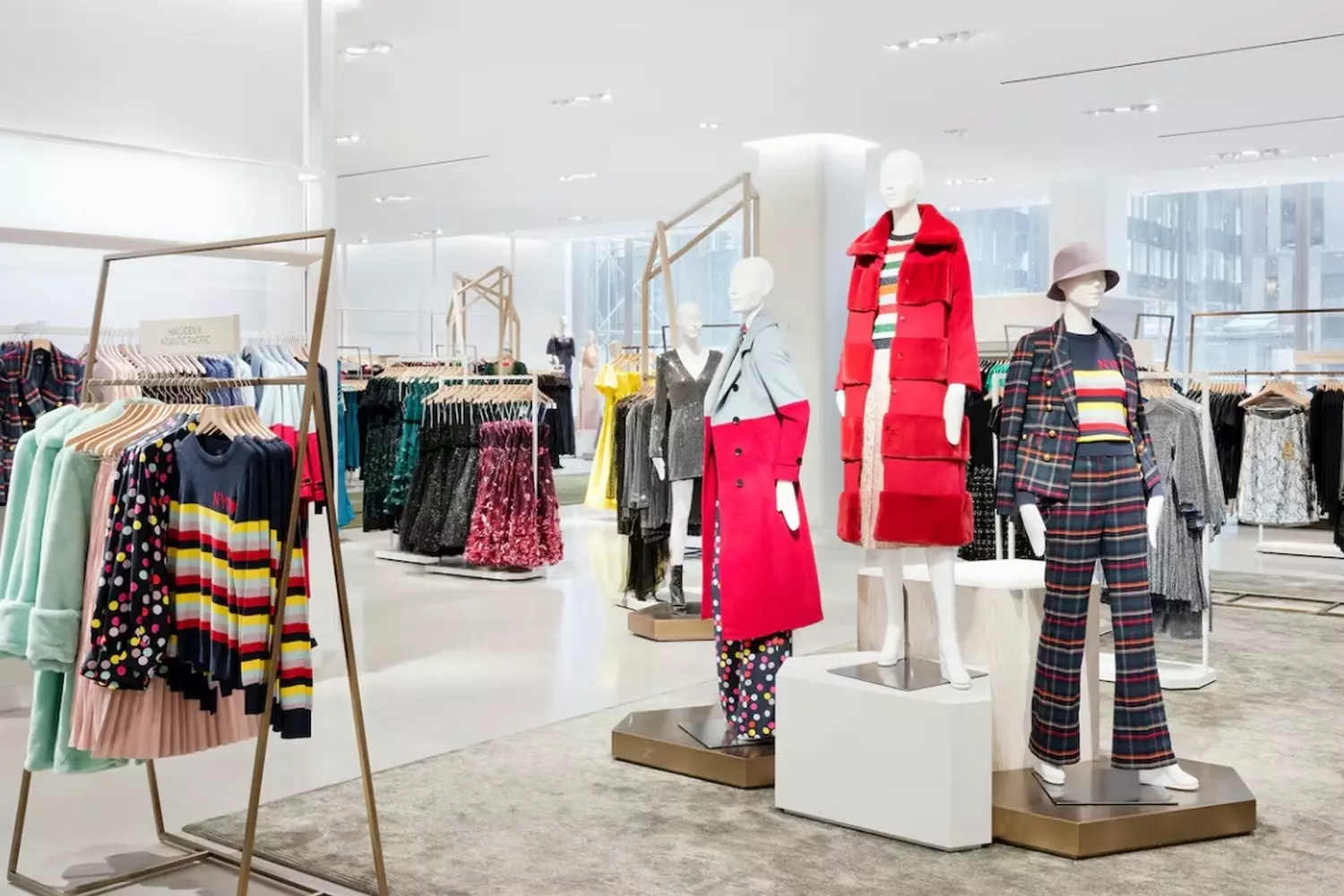
Outlets: How to Buy Luxury for Half Price
While some save up for a Gucci bag for years, others know the secret: true luxury begins where the full-price tags end. If department stores are the stage of fashion, then outlets are its backstage, where real treasures await. Here, brands sell past collections at discounted prices, attracting deal hunters from all over the world.
Why American outlets are every shopaholic’s dream
- Discounts up to 70% on brands like Armani, Coach, Michael Kors, Versace.
- Spacious open-air shopping villages with restaurants and relaxation zones.
- Regular sales and special offers, especially during holidays.
- Wide range of sizes, including rare and non-standard ones.
Woodbury Common Premium Outlets
Arguably the most famous outlet, this is not just a shopping center — it's a fashion city under the open sky. 7 reasons why it’s a mecca for fashion pilgrims:
- 250+ boutiques across an area the size of a small town (the size of 22 football fields)
- 25–75% off all year round + extra coupons in the app
- Exclusive outlet collections from Gucci, Prada, Saint Laurent
- Dedicated bus terminal for shopping tourists from New York
- Personal record: $150,000 spent in one day (2019)
Insider hacks from regulars
- Map of the area
Luxury brand boutiques are hidden in the "Purple Path" zone. - Best time
Thursday at 10:00 AM — tourists are still sleeping. - VIP service
The privilege center gives an extra 10% off upon card registration. - Seasonal highlights
In January — Moncler furs at 60% off, August — Eres swimsuits for half the price.
"Woodbury is like Disneyland for adults, where instead of Mickey Mouse you’re greeted by a Prada sales manager with a glass of prosecco" - Harper's Bazaar
Last Call by Neiman Marcus
The perfect place for luxury lovers, especially those who enjoy finding rare designer pieces. The store features collections from top fashion houses — Balenciaga, Dolce & Gabbana, Valentino — at 50–70% off. Special attention should be given to the shoe and jewelry sections — often home to discontinued gems.
- Secret: The best pieces appear two weeks after the season ends in regular stores.
- Hack: In the "Designer Apparel" section, you can find dresses for $199 instead of $2,000.
- Fact: Some items are tagged "Made exclusively for Last Call" — not second-rate, but specially commissioned.
"Last Call — it’s like a secret sale for those in the know" – Vogue
Nordstrom Rack
The younger but very ambitious sibling of the Nordstrom department store. It regularly features unsold items from the main store, as well as pieces made specifically for the Rack. Brands range from Madewell and Free People to Nike and Marc Jacobs. In some cities, Nordstrom Rack even offers stylist services and lounge-style fitting rooms.
- Stats: 72,000 pairs of shoes in the largest locations.
- Trophies: Jimmy Choo for $299, Golden Goose for $250.
- Hunting tip: The "The Clearance" section in the back — prices are 40% lower.
- Fact: In 2019, someone found vintage Nike Air Mags from "Back to the Future" here for $500 (worth $10,000 on StockX).
Saks OFF 5TH
The budget-friendly version of the iconic Saks Fifth Avenue. This format offers luxury pieces at a third of their original price. Brands range from Karl Lagerfeld, Theory, Vince and even Burberry. Especially popular is the men's suit and accessories section — often a goldmine for rare businesswear finds.
- Main attraction: Furs for $1,999 instead of $15,000 in January.
- Secret section: "Last Chance" — items at 90% off (requires digging)
- Fact: In 2020, a Tiffany ring was sold here for $1,200 (original price $7,800)
Premium Outlets (Simon Group)
The largest outlet network in the U.S., with over 80 locations. Among the most famous: Desert Hills in California, Orlando Vineland in Florida, and Las Vegas North. These outlet cities feature over 200 brands each, free parking, rest areas, restaurants, and even tourist info stands. Often include Tax Free programs for international shoppers and discount coupons available online in advance.
Outlets are spread across the country: in Orlando, Las Vegas, Los Angeles, Chicago, Miami. Many are designed like European towns and may surprise even those used to Parisian boutiques.
5 Facts That Will Change the Way You See Outlets
- World’s largest network
Each year, 400 million shoppers visit Premium Outlets (more than the U.S. population) - Own currency
Simon Coupon Book offers an extra 25% off even at Gucci and Prada. - Helipads
In the most premium locations (e.g., Las Vegas North), wealthy clients fly in directly to the entrance. - Navigator app
Shows not just maps, but hidden sales based on geolocation. - True stories
In 2019, a woman in the Orlando outlet found a Hermès Birkin bag for $1,200 (boutique price — $15,000)
Fun fact: Some outlets partner with tour operators and offer VIP cards with extra discounts and lounge zones for rest. Sometimes you can even access invite-only sales.
How to Shop Like a Pro in Outlets
- Timing is everything
Best time — Tuesday morning (new arrivals) - Check the tags
Sometimes double discounts are hidden under the top sticker - Look for “try-on tags”
Items returned after fitting (never worn) - Hidden racks with exclusives
They’re called: "Manager’s Special" — VIP client returns (sometimes with tags), "Final Call" — items headed to charity shops in 2 days. How to find them: Ask a staff member, "Where’s your additional markdown zone?" - Golden hour
30 minutes before closing, staff starts tagging additional yellow discounts (up to -70%) - Seasonal hack
January 9 and August 15 — dates when outlets receive unsold holiday stock. - How to tell “made for outlet” from true luxury
Read the labels: if it says "MADE FOR OUTLET" — simplified version (different fabric/hardware), if there’s an original price tag crossed out — it’s a boutique return (same item)
Hack: In Burberry and Gucci, look for item codes starting with "F" — these are full collection models. - Blacklisted brands to avoid in outlets
Michael Kors, Coach, Kate Spade — 80% of their collections are outlet-specific (lower quality), Max Mara, Brunello Cucinelli, The Row — their items are straight from flagship stores. - How to get VIP status (even as a tourist)
Ask for a "Loyalty Card" — many outlets have hidden programs (e.g., Premium Outlets offers +10% off for registration). Buy something cheap in a boutique — a manager may then offer access to “private sales.” Provide a phone number already in the system — this sometimes auto-activates discounts. - Bag hunting
Gucci, Prada: The best models are hidden in glass cases behind the register — ask, "Do you have anything not on display?" Chanel: Arrives at outlets only 3 years after release — look for classics (2.55, Boy)
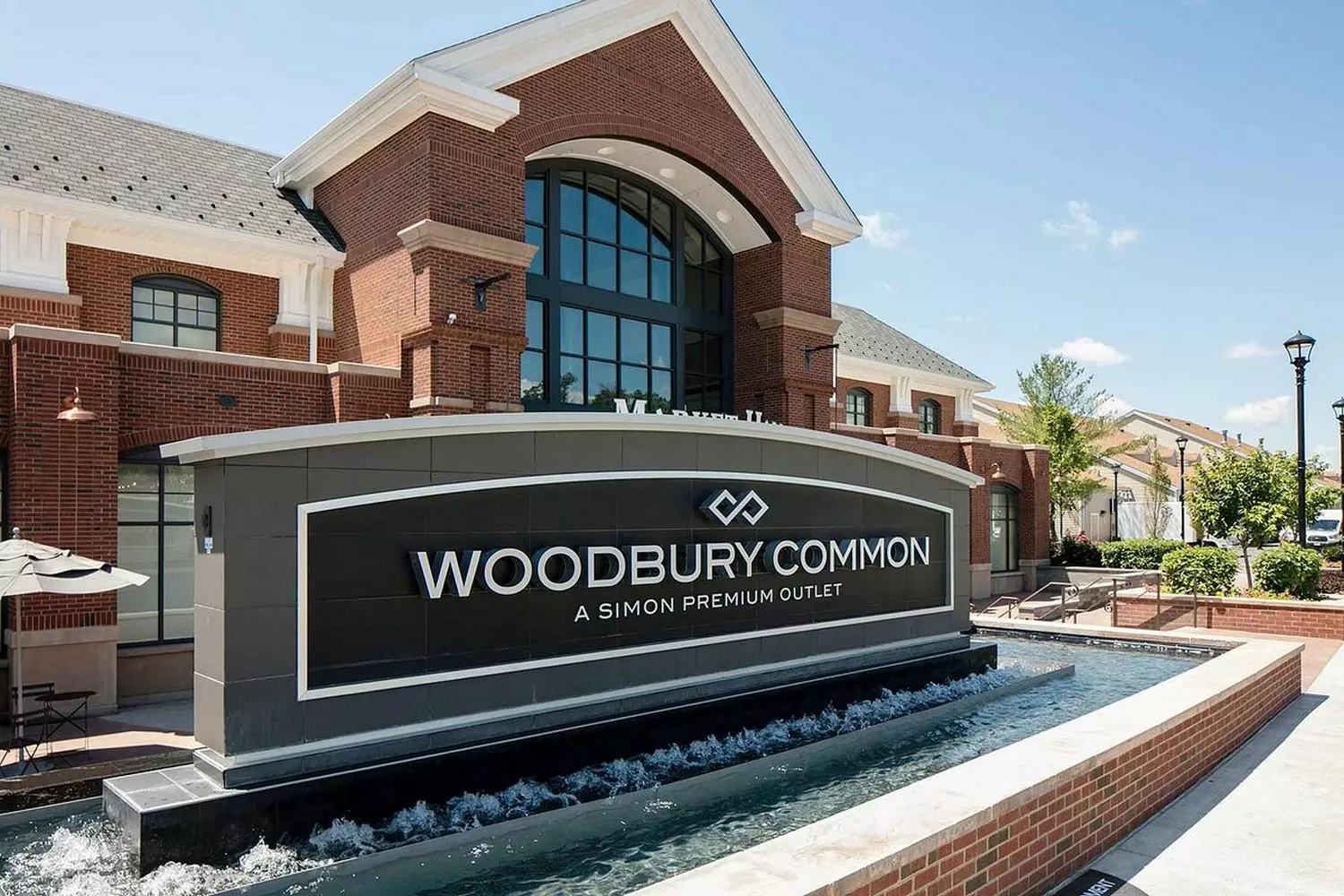
Shopping as a Lifestyle — with American Butler
America is not just a country of stores. It’s a country where shopping is a part of the culture, a part of the identity. Each department store is more than just a marketplace. It’s emotions, memories, style, and inspiration.
And to get the most out of this experience, it’s worth trusting professionals. American Butler will help organize:
- Personal shopping tours to the right cities
- Visits to private sales and VIP zones
- Translation, logistics, and on-site support
- Stylist advice and help with returns
Shopping in the US can be incredible — if it’s handled by someone who knows how this machine works from the inside.














